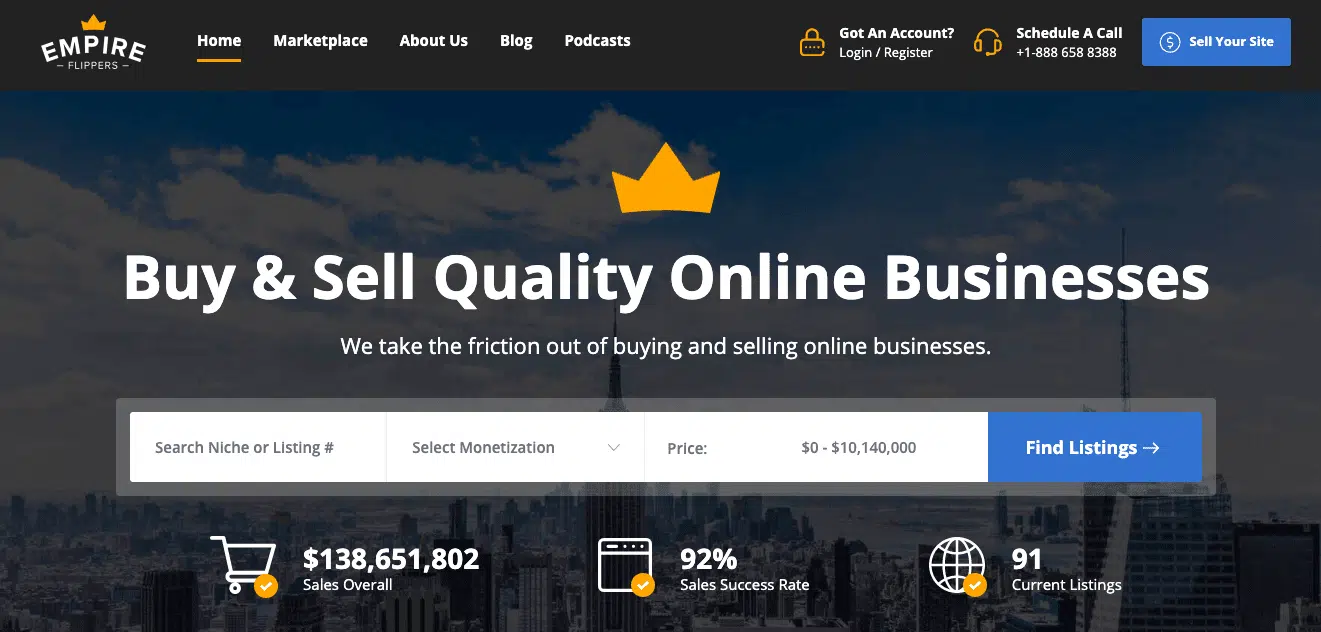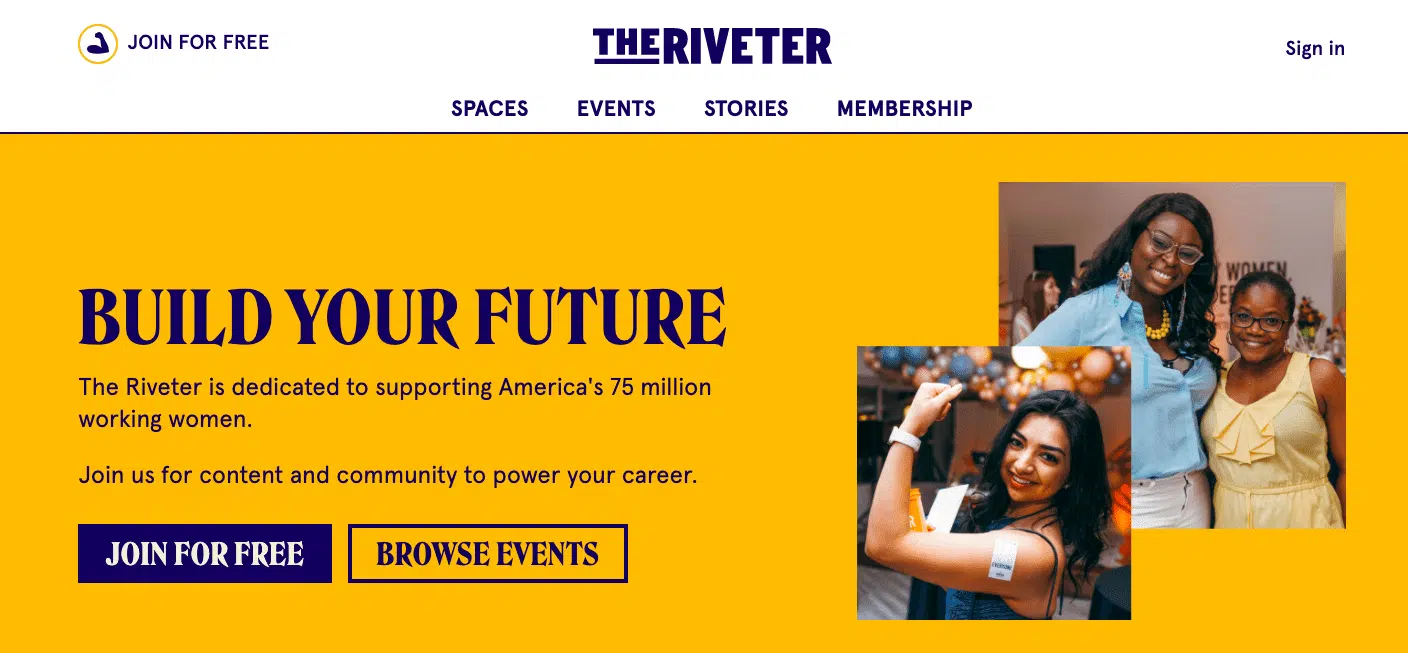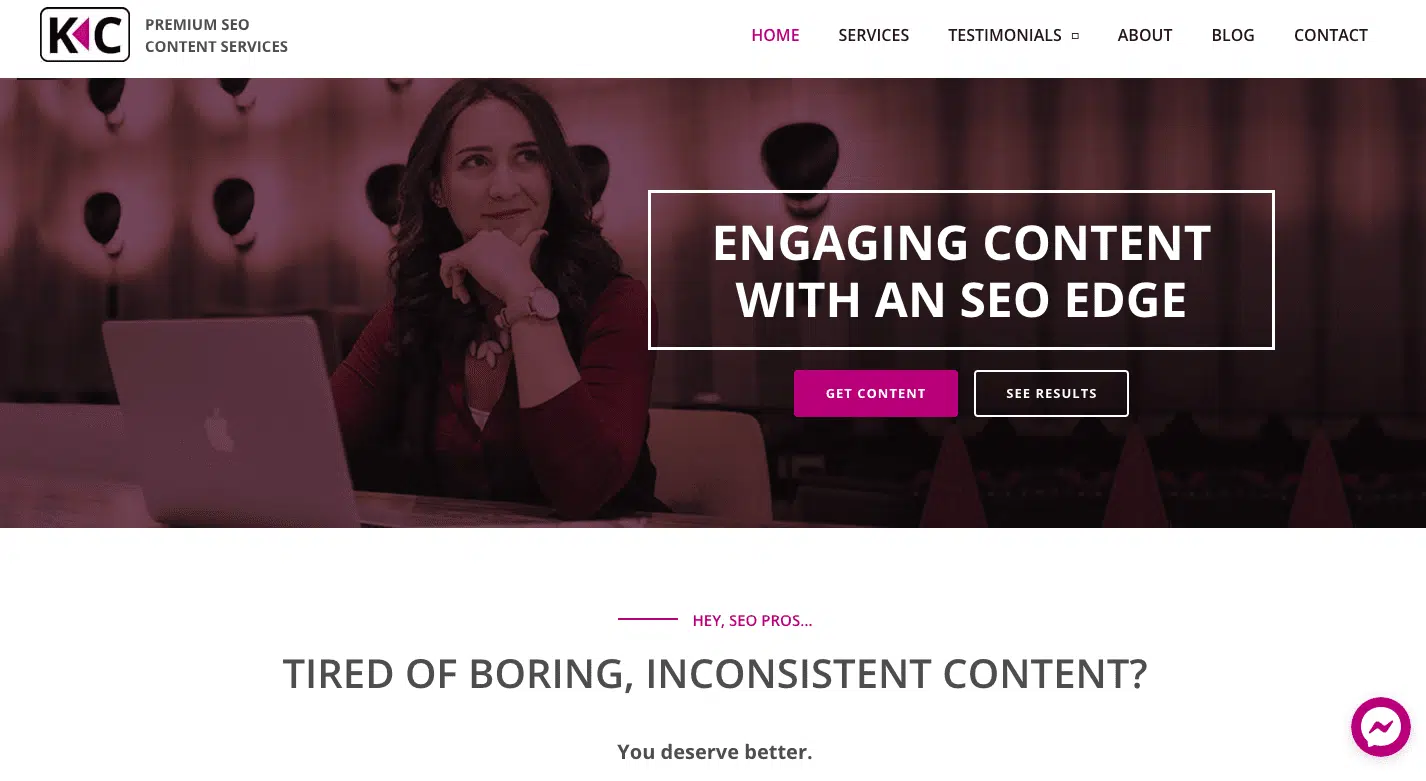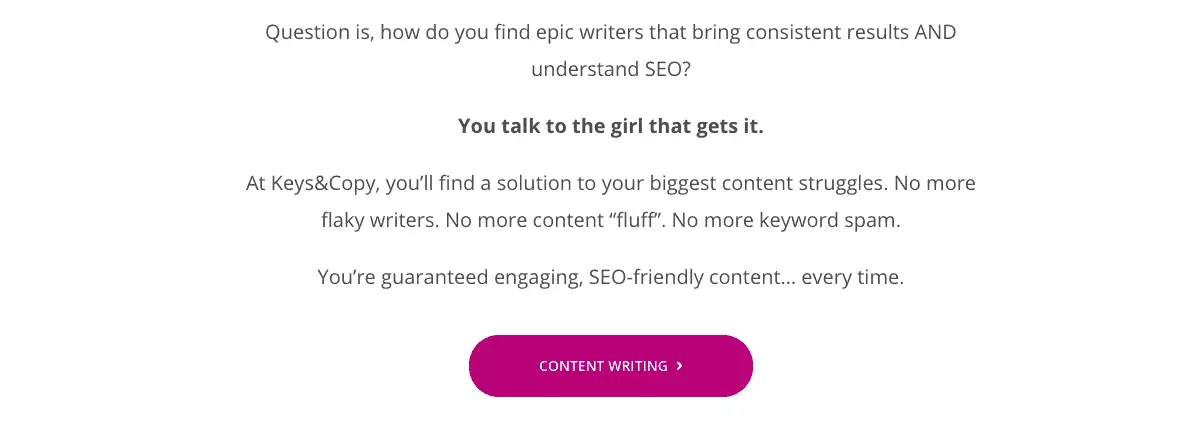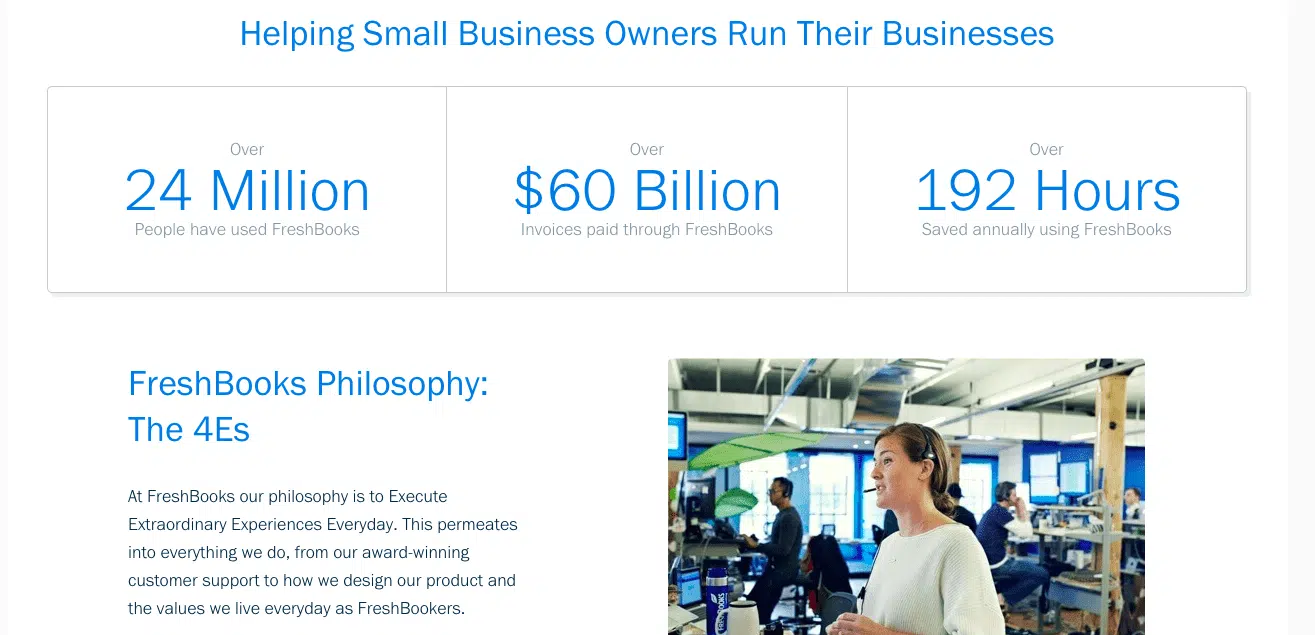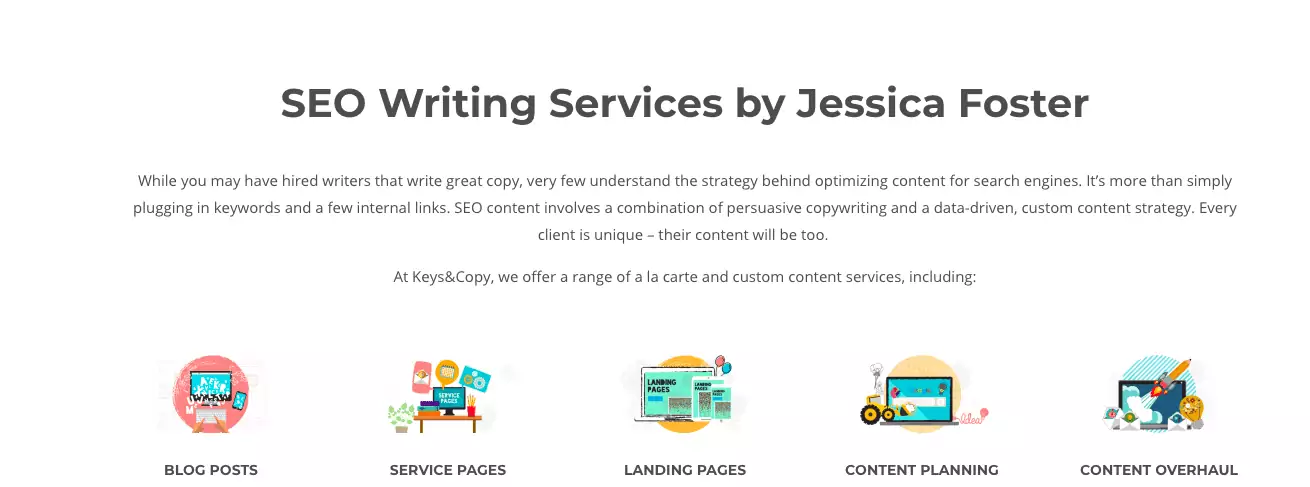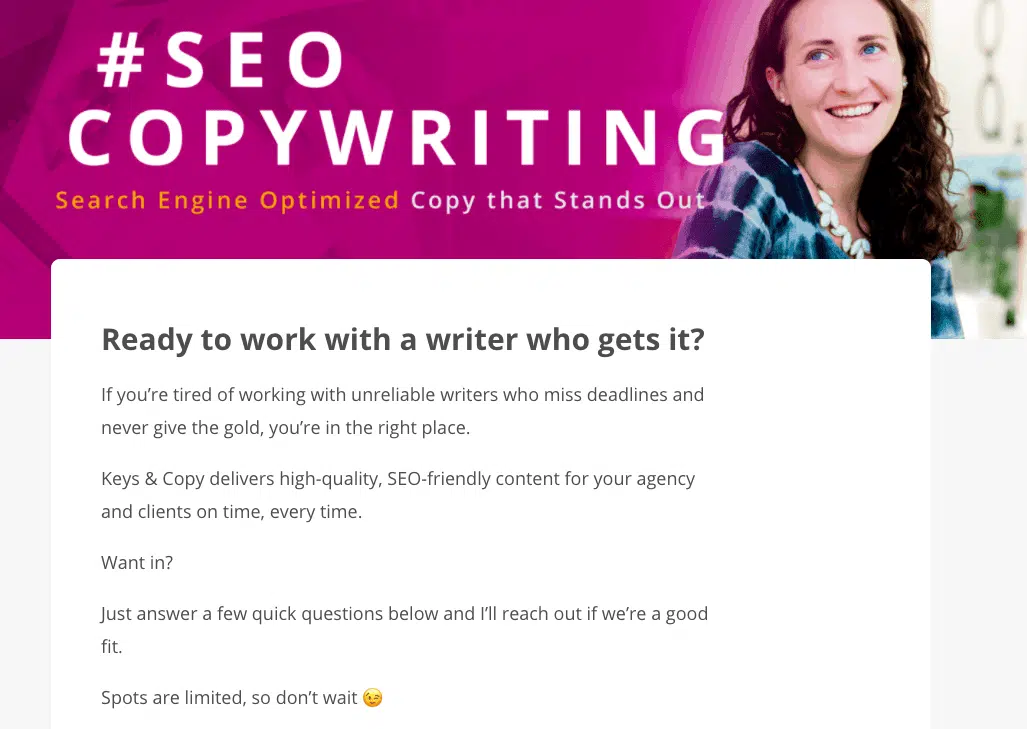Many SEO professionals focus on the power of SEO content to increase Google rankings and drive traffic. And why SEO content certainly does work to keep new website visitors coming in, it doesn’t automatically turn those visitors into customers.
The missing piece is Conversions – actions taken by website visitors to transform them into leads, subscribers, customers, or clients. This is the ultimate goal of SEO content… to make you money!
But enticing visitors to take action isn’t always easy. Generic or even formulaic SEO content just isn’t compelling enough to get users itching for your offer.
That’s where having a Unique Selling Proposition (USP) comes in.
In this juicy guide, I’m going to define what a USP is, help you define yours, and teach you how to use it to increase conversions on your SEO content.
Vamanos!
What is a Unique Selling Proposition?
A unique selling proposition is a positioning statement that brands embody that differentiates them from their competitors. In other words, your USP is a declaration of what makes you special compared to other brands in your niche.
Typically, your USP highlights one defining benefit that makes you stand out from your competitors. However, sometimes, it may encompass several selling points all rolled into one.
What a Unique Selling Proposition Isn’t
A unique selling proposition is not a tagline, nor does it apply to specific marketing offers, like “free shipping”, “25% off”, “buy one, get one”, or “24/7 customer service”. While these offers may be enticing, they’re not particularly unique to your brand, as they can be easily copied by your competitors.
There is a bit of a grey area when it comes to characteristics like “family-owned” or “great customer service”, as these aren’t very strong either. Your goal in defining your USP should be to highlight something that’s overall unique to your brand and positions you as superior to your competitors.
Does Every Brand NEED a USP?
Yes – Every brand needs a compelling USP if they want to differentiate themselves from their competition.
Now, I will say that many brands have a USP even if they haven’t taken the time to intentionally define it. This often happens once a business gains experience in their industry and naturally fine-tunes their language to appeal to the interests of their target audience.
However, I always encourage brands to intentionally define their USPs because it makes creating content and attracting customers way easier. You’re essentially able to hook your audience faster – making your marketing campaigns more effective – when you make it clear why you’re the best.
Why?
Defining your USP helps you focus your marketing on highlighting the very best selling points of your brand. It influences every area of your messaging – from brand materials to social media content to web copywriting and beyond.
Without a USP, you may be left scrambling trying to communicate why your brand is better than your competitors. Potential customers need this information in order to decide who to work with or what products to buy.
If you can’t explain how your brand is different, don’t be surprised when customers don’t see the big deal in why they should work with or buy from you.
How to Define Your Unique Selling Proposition
Now, I’m going to help you define what your USP is so you can start writing content that rocks. After all, the goal is to hook your website visitors in and start making that $$$$$!
Defining your unique selling point is pretty easy, especially if you know your target audience already. If you don’t, don’t worry. I’ve got steps for that too!
What Does Your Audience Care About?
There’s no use in writing a USP that has nothing to do with what your audience actually cares about. That’s why I DON’T recommend writing it out of thin air. Instead, you got to do a bit of market research.
Here’s how you figure out what your audience cares about:
- Create a survey using Google Forms to ask your audience some questions about your offer.
- Ask your audience what it is that they are looking for when it comes to your products, the services you offer, or in working with brands like you.
- Also, ask them what their biggest struggles are and how they imagine your product/service being a solution to their problem.
- Finally, ask them what issues/complaints they have about your competitors.
I recommend trying to get at least 10 people (from your target audience) to respond to this survey so you can get a pretty idea of what they’re looking for. The more responses, the better.
Then, tally up the most common responses to each question.
These should give you a pretty good idea of 1) what your audience is struggling with, 2) what they’re looking for when it comes to services/products like yours, and 3) why they don’t love your competitors.
With this information, you can pick out some selling points that may be of importance to your audience and then position your brand above your competitors.
What Makes You Different from Your Competitors?
Suppose the most common response to the question “What are you looking for when it comes to SEO content?” is “high-quality content”.
Then suppose that the most common answer to “What don’t you like about other SEO content providers?” is “poor quality work”.
In this case, it’s pretty obvious that your unique selling proposition could be that you provide “high-quality content” – content that’s far superior to that of other content providers.
This can easily be your key differentiator.
In reviewing your survey responses, consider what characteristics you have that your competitors don’t have – and which of those seem to be most important to your target audience. Brainstorm a list of things that make you different and then hone in on the ones that make the strongest case for your brand.
A Great USP Should Be…
- Focused on what your audience values: What does your audience care about and can you offer something your competitors don’t provide?
- More than a tagline: A punchy slogan is great, but your USP should apply to all of your brand messaging. It’s something you embody in all of your content, across all platforms.
- Defensible: You should be able to make a case for why your brand is better than the competition and why customers should choose you over “the other guy”.
- Straightforward: No need to get fancy with your language. Your USP can be as simple as you saying what you do, who you serve, and what makes you unique.
Your USP “Formula”
While there is no set formula for writing a great USP, I did like this fill-in-the-blank version from Shopify that helps brands define their USP:
“[YOUR BRAND] offers [PRODUCT/SERVICE] for [TARGET MARKET] to [VALUE PROPOSITION].
Unlike [THE ALTERNATIVE], we [KEY DIFFERENTIATOR].”
Without this formula, I’ve defined my brand’s (Keys&Copy) USP as “Engaging Content with an SEO Edge”. This is based on my market research that found that SEO professionals (my target audience) are looking for “engaging”, “search engine optimized” content.
I have since expanded this to include descriptors like “consistent” and “high-quality”. So, the formula version of my USP may be something like:
“Keys&Copy offers SEO content services to marketing agencies and SEO providers looking to generate more traffic and leads for their clients. Unlike other SEO content providers, we offer 100% original, engaging content, ensuring the consistent quality marketers are looking for.”
This USP sets me apart from SEO writers who may focus on price, experience level, or other factors that don’t speak to or resonate with my unique target audience.
Your unique selling proposition can be a simple yet assertive statement that states what makes your brand different from your competitors. With your market research in hand, try to hone in on what makes your brand unique based on the interests of your audience.
Now, let’s see some unique selling proposition examples from other brands.
3 Unique Selling Point Examples We Love…
Sometimes it helps to have a little inspiration when it comes to writing your unique selling proposition. Here are 3 examples of companies that I think have nailed their USPs.
What can you take away from these examples?
SkinnyMe Tea
SkinnyMe Tea is one of the most successful ecommerce tea companies. They’ve amassed a large following of loyal customers by providing high-quality products and creating a sense of community in the wellness niche.
Their unique selling proposition focuses on “transformation” – SkinnyMe Tea drinkers can expect a “happier and healthier” life. Their strongest selling point is that their tea helps customers “detox” and shed some extra pounds.
This is unique from other tea brands that focus on taste, exclusivity, origin, stress-relieving factors, and other selling points. SkinnyMe Tea has honed in on what makes their tea the best – keeping their customers fit – and it has paid off in the millions.
Empire Flippers
Empire Flippers markets itself as a “vetted marketplace” for “quality” online businesses to be bought and sold. Essentially, business owners (and aspiring business owners) come here to buy businesses or sell their own websites to turn a profit.
Their main selling point is that these businesses are verified, assessed, and listed on their “curated” website so buyers can confidently buy online businesses. This is a sigh of relief for buyers who may be used to Empire Flippers’ spammy, less reliable competitors.
They are the largest marketplace for buying and selling “established, profitable” online businesses – making them an obvious choice for people looking to buy or sell legit websites.
The Riveter
The Riveter is a multi-location coworking space founded by women. While people of any gender are free to work and commune at any of The Riveter co-working spaces, this company places a strong focus on supporting women-run businesses and initiatives.
This makes a strong statement, as many male-dominated office spaces can leave women feeling out of place, isolated, or unacknowledged. The Riveter takes the initiative to support “America’s 75 million working women” by giving them a literal seat at the table.
The important thing to note here is that a unique selling proposition, by definition, differentiates one brand from another. Some brands may cater to a certain demographic, which helps them stand out from their competitors. This is not an issue as long as the brand’s messaging is not exclusionary but rather inclusionary of a specific target audience.
The Riveter found a gap in the market and filled it. Now, they host workshops, courses, events, and more to advance members’ “personal and professional growth”. This positions them as an intentionally female-friendly option compared to their male-dominated competitors.
Why Your USP Matters When it Comes to SEO Content
Your unique selling proposition should be embodied in all of your branding and marketing content but, for the purposes of this article, I am going to talk about why it matters for your SEO content.
In the intro, I talked about the fact that SEO content is used to drive traffic but that it’s not always effective at driving conversions. This is because many businesses and SEO content creators fail to work their USP into their content.
You should have your USP in mind every time you create a new piece of content because it sets the positioning for every single piece. With your USP top of mind, you’re better prepared to write content that speaks to the unique needs of your audience and explain how your brand differs from your competitors.
Simply put, writing with your USP in mind helps you hook in your readers and compel them to take action on your SEO content.
Your USP in Action…
Defining your USP will help you write content that draws readers in and directs them to your most important conversion points.
Here are just a few ways your USP applies when you’re creating SEO content:
- Keywords: Since your USP is based on the unique interests of your audience, you’ll have a head start when it comes to identifying the right keywords for your content.
- Competitive Positioning: Want to outrank your competitors’ content but need a different angle? Your USP will help you create content that speaks to your particular audience.
- Keyword “Density”: Part of creating SEO-friendly content is using your target keyword and secondary keywords throughout your content. With your USP in mind, you will naturally cover topics – and, therefore, keywords – your audience is interested in.
- Calls-to-Action: Your CTAs will be much more compelling when you use terms that align with your USP. In other words, reiterate your main selling points and invite users to take action.
- Engagement: When you write content that’s of interest to your audience, they’re more likely to actually read it, share it, and engage with it. This is where your USP works to make your content 10X better than generic search engine optimized content.
With these applications in mind, let’s talk about how you can work your USP into your website content to really reel in your audience.
Need help finding the right keywords for your content? Use SEMrush to compare search volume, competition level, and more.
Working Your USP into Your Website Content
Your USP determines your brand’s competitive edge and should, therefore, apply to all of your content in order to hook in your target audience. There are multiple areas of your website where you can intentionally work in your USP-focused messaging.
Home Page
Your home page is one of the most important pages on your website, as it is often the first page visitors see when they land on your site. The copy on your home page needs to do double duty in terms of hooking visitors in and directing them to other pages on your site.
For these reasons, I recommend putting your USP front and center so visitors are made immediately aware of what you do, who you serve, and what makes you unique.
This will help visitors know whether they are in the right place. You also make it super easy to direct them to your service or landing pages, since you state your offer right away.
For example, here’s how I have worked my USP into my home page copy:
In the banner, I state that I create “engaging content with an SEO edge” and immediately direct them to “Get Content”.
Farther down, I position myself against other solutions/competitors by asking them if they are “tired of boring, inconsistent content”. I also make it obvious that I work with “SEO pros” and that I provide content that’s “better” than what they will find elsewhere.
Even further down, I again appeal to their desire for “engaging, SEO-friendly content” and direct them to my Content Writing service page:
You can easily work your USP into your home page copy in this way to make it obvious how your brand is different from other brands. Even better? You have some opportunities to work in your target keywords (in my case, “SEO content”), naturally.
About Page
I tend to get on my soapbox about About pages because I dare say most brands get them wrong. Your About page is not about YOU, it’s about your audience. In other words, it’s the perfect place to use your USP to appeal to the needs of your prospective customers.
Like your homepage, you’ll want to make it obvious who you work with and what you offer. You’ll also want to appeal to your audience’s struggles and desires (which you should have identified with your market research survey).
Then, you can turn this into a narrative that better explains your brand, why you do the work that you do, and why your prospective customers should bother working with/buying from you.
A good example of this is FreshBooks, which immediately addresses their audience of “self-employed professionals”:
They express that their goal is to “help small businesses run their businesses” and that their company values – “The 4 Es” – shape everything that they do.
Again, their About page is less about the background and logistics of the company, but rather who they serve and how. This gives visitors that warm and fuzzy feeling that they’re in the right place with the right brand to suit their needs.
If it makes sense here, you can target branded terms (if you have that kind of brand awareness already) or unbranded terms that don’t already have a home on your website. Then you get the double-whammy of driving traffic and hooking in your target audience.
Need a website? Launch your own website or blog with WordPress – the world’s leading website platform. Get started with their array of professional, user-friendly designs.
Service Pages
Now service pages can take on many forms depending on your strategy.
If you have brand recognition, you might be able to target branded (brand name) terms and draw in users who already know of your brand. Or, you might use unbranded terms to target users searching the services or products you offer.
In either case, you’ll want to use your USP to communicate what it is about your services that make them better than your competitors. This may differ slightly depending on the service, so you might want to research your competitors to come up with some ideas.
When I am writing service page copy, I try to speak to the audience’s main struggle or goals right away, like:
“Looking for high-quality leads for your business? We offer effective lead generation services for consultants.”
Or
“Struggling to get followers on Instagram? Our data-driven Instagram marketing services boost engagement and skyrocket your followers, fast.”
Again, you’re making it super obvious what it is that you do and who you do it for.
Further down the page, you can then position your brand against your competitors, like:
“Other lead generation businesses use cold messaging to draw in leads. At [brand], we prioritize quality over quantity. We…. [explain approach].”
Or
“Many Instagram marketing agencies superficially increase your followers by sending spam accounts to your profile. We only reach out to verified accounts in your niche to increase your followers – authentically.”
See how I am highlighting faults in competing providers while presenting our brand as the superior alternative? You want to do this at least once on your service page to make it easy for visitors to see you as the obvious choice.
Further, you can reiterate your primary selling point and then direct users to a specific call-to-action. After all, the goal here is to get users to buy your services, so you want to make it stupid easy for them to do so.
Contact Page
Most Contact Us pages are short and sweet, and you’ll realize that many of them simply restate their USP. This reminds website visitors what differentiates them from other brands and why it’s worth working with them.
On your contact page, quickly reiterate what your brand does, who you serve, and why they should contact you. Then, include a clear call-to-action – whether that means sending you a message, scheduling a free consultation, or filling out an application.
Calls-to-Action
By now I’ve mentioned CTAs a few times but I want to get more specific here.
Your CTAs should appeal to the interests of your audience. They should be clear, concise, and straight to the point.
CTAs like “Learn More” or “Contact Us” are generic and are inferior options in the presence of more compelling CTAs.
Instead, your CTAs should speak to what your audience is actually looking to do, like:
- “Get SEO Content”
- “Schedule a Free Marketing Consultation”
- “Speak to a Trusted Attorney”
- “Browse Product Catalog”
- “Book a Call”
Think about what it is that your audience is trying to accomplish. Reiterate your USP and then entice them to take a specific action to get the goods (i.e. your offer).
Blog Articles
Blog articles are typically top-of-funnel content that’s meant to appeal to a wider audience. This audience may be looking to learn about a specific topic but they may not be ready to be sold on your offer.
Still, you can work your USP into your blog post content to position your brand as an authority and, hopefully, move users down the funnel. If you’re able to speak to their interests, they’re likely to venture to other pages of your site.
For example, Shopify also wrote an article on “What is a Unique Selling Proposition?” but we have VASTLY different audiences. They are trying to attract ecommerce business owners and sell them on their ecommerce platform; I work with SEO and marketing agencies in search of SEO content.
While, hypothetically, we may both rank for “what is a unique selling proposition”, not all of those visitors will be our ideal customers. To hook in the right TYPES of users, we’ll want to work our USPs into our content.
So, while Shopify may talk about the value of USPs for ecommerce business owners, here I am talking about USPs as they relate to SEO content.
By the end of the Shopify piece, ecommerce businesses will have more confidence in Shopify as a leader in the ecommerce space; by the end of my piece, SEO professionals should (hopefully) see me as an authority on SEO content.
You can still use your USP to position your blog articles to speak to your unique audience, draw them in, and direct them to other pages on your site. You can hook them in with your offer – or a lead magnet – and move them down your sales funnel.
Got SEO content? Optimize your blog articles and web pages like a pro with Surfer SEO – my favorite content optimization tool.
Lead Magnets
Lead magnets are super powerful when it comes to driving conversions. Basically, lead magnets are enticing pieces of content that users opt into, usually in exchange for their email address.
But users won’t opt in for just any ol’ lead magnet – it needs to be mouth-wateringly good. How do you make a mouth-wateringly good lead magnet? You guessed it – use your USP.
For example, I know my audience is looking for engaging, SEO-friendly content. So, I created a lead magnet – my SEO Content Roadmap – which helps them create engaging, SEO-friendly content. See what I did there?
Once you know what your audience wants, it’s pretty easy to make a lead magnet they’ll be interested in.
Again, you’ll want to highlight the main selling point of your lead magnet to draw them in and make it uber clear what they need to do to get it.
Some ideas of interesting, USP-focused lead magnets include:
- A free ebook on “How to Get More Clicks on Your Facebook Ads without Blowing Your Budget”
- A pre-recorded webinar on “5 Things Most Marketing Agencies Get Wrong About Email Marketing”
- A snazzy PDF on “10 Effective Content Marketing Tips for Coaches”
- A report on “The State of Influencer Marketing in 2020”
- An email course on “5 Days to Fully Booked: How to Get More Photography Bookings”
Whatever your USP is, create a lead magnet that appeals to your unique audience and provides value they can’t find anywhere else.
Using Your USP Messaging to Increase Conversions
I urge you to follow the process above to define your USP and improve your SEO content. Whether your content is generating traffic already or you’re just getting started, it’s always worth it to create content your audience will love.
Your USP messaging will help set you apart from your competitors, making you the obvious choice for your target audience. Further, it will make it easier to craft compelling copy and CTAs that will drive users to take action.
Have you considered defining your USP before? Let me know your thoughts in the comments below.


